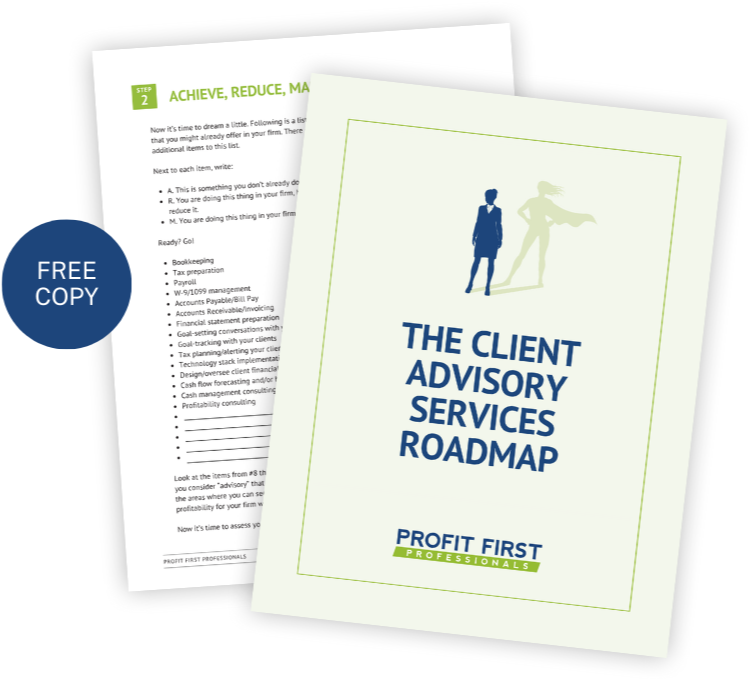There’s a common misconception that Profit First emphasizes expense reduction to the point that businesses are forced to run on “leftovers.” Yes, an expense analysis is one of the first things a Profit First Professional will do when implementing the program with a new client. And, yes, we do put a large amount of emphasis on reducing unnecessary or redundant expenses.
But not all expenses are created equal. In fact, there are certain expenses that – if cut – can actually cost your business money.
When you approach expense reduction as a “slash and burn” endeavor, you run the risk of harming your business. Just as you should be cautious of a tax accountant who encourages you to “spend down your profit” to save money on taxes, you should be cautious of an accountant, bookkeeper, or coach who tells you to cut expenses to the bare minimum without going through the additional step of individually weighing the benefits and risks of cutting each expenditure.
So, how can you determine what expenses you should cut? It’s really pretty simple.
Cut Expenses. Keep Investments.
Let’s address the elephant in the room: Some “pure expenses” are essential to your business operations. Things like utilities, business licenses, and breakroom coffee (I said what I said) might not generate a direct return for your company, but you must maintain them in order to operate a business.
But aside from these “necessary evils,” the best way to determine whether to cut an expense is to ask yourself this question: Does this expense generate a return for my business?
If the answer is no, then you can – and should – eliminate it.
You see, even though they appear on the profit and loss statement instead of on the balance sheet (where “true” investments in the accounting sense of the word reside), some expenses are really investments in your business. These are the expenses that generate a return for your company. This return can be monetary, but it can also be in the form of efficiency.
You want to avoid eliminating investments. Eliminating an investment is the equivalent of approaching weight loss by removing muscle because it “weighs more” than fat.
A (Tricky) Example
It’s often easy to identify pure expenses. The subscription to the newsletter you intend to read “later” but rarely do. The Subscribe and Save order for rubber bands when your desk drawer is overflowing with them. That pesky $5/month for the app you keep but don’t use because the hassle of canceling hurts more than paying the $5.
But sometimes an investment can masquerade as an expense.
I was working with a professional services provider who needed to make some dramatic expense reductions (we had already addressed her pricing issues, which is a topic for a different article.) Like most business owners, she had reviewed her expenses and homed in on the largest one.
In this case, it was her virtual assistant.
“I have to cut her,” the business owner said. “If I cut out the amount I’m paying her, I’ll be more than 75% of the way to my expense reduction goal.”
“Okay, let’s discuss this. What does your VA do for you?” I asked.
Her answer? “Everything.” And she wasn’t exaggerating.
Basically, the VA handled the entire operations end of this professional services business, freeing the business owner to focus on the revenue-generating activities only she could do as a licensed professional. Without the VA, the business owner would more than double the amount of time she spent working, and by her own admission most of the essential tasks would either go undone or be done inadequately.
You see, the math worked, but the physics didn’t. The easy answer – cut out the VA – would have been detrimental to the health of the business. In fact, the cut probably would have completely sunk the business.
Rather than cut the VA altogether, we dove deeper and identified things the VA was doing “just because they had always been done.” By eliminating those tasks, we were able to keep the VA but reduce the amount she was being paid.
What about the rest of the expense reductions? We found them in seemingly insignificant increments of $10 here and $25 there. Was it a quick process? Absolutely not. Was it fun? Also no. But we got there, and when we were done, the business was running more efficiently and more profitably than ever before. The business owner didn’t even feel the “loss” of the expenses we cut. And – even though she was being paid less – the VA was happier because she was able to focus more on essential business tasks than the minutia she was burdened with before our analysis.
Proceed With Caution
Of course, the opposite scenario can also occur. You might be able to look at every expense your business incurs and justify why it’s necessary.
This is why it’s paramount to work with someone who understands your business and will take the time to analyze and challenge your assumptions about what is necessary and what isn’t. And that’s exactly what our Profit First Professionals are taught to do.
If you’re interested in working with a professional who will turn your business into a lean, mean, profit-generating machine, click here. We’ll happily introduce you to a PFP who will guide you through the expense reduction process in a way that is – if not exactly fun – at least safe for your business’s health. Investing in the services of a Profit First Professional will yield returns well beyond what you pay for their expertise.
If you’re interested in helping businesses do this sort of expense reduction, I encourage you to apply to become a Profit First Professional. This investment in your firm will garner returns well beyond increased advisory revenue. Our team will share the details during your enrollment call.





Comments